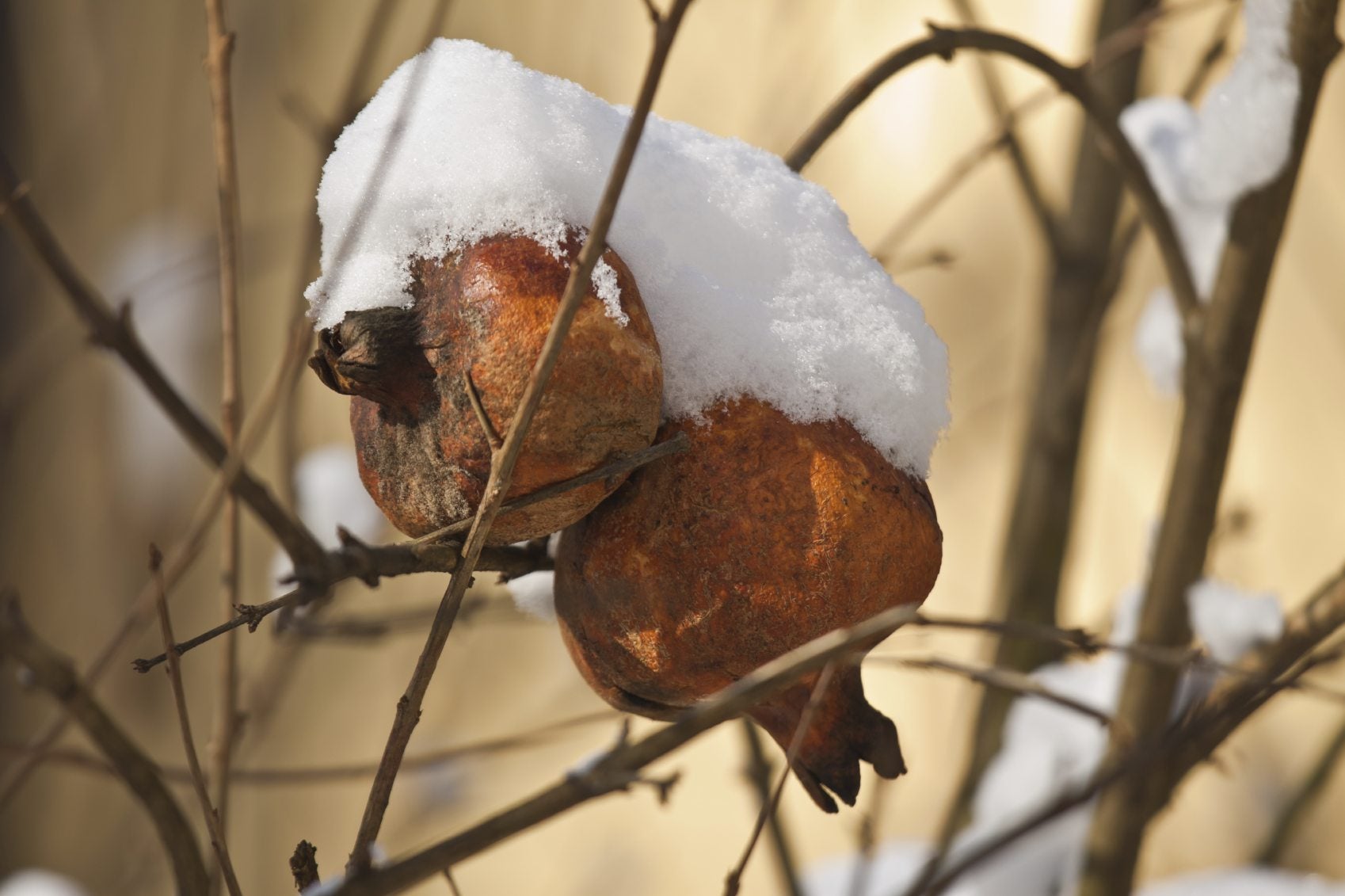
Pomegranates hail from the far eastern Mediterranean, so as you may expect, they appreciate plenty of sun. While some varieties can withstand temperatures as low as 10 degrees F. (-12 C.), for the most part, you should protect pomegranate trees in wintertime. How do you go about overwintering pomegranate trees?
Pomegranate Winter Care
Dense, bushy, deciduous plants, pomegranates (Punica granatum) can grow up to 20 feet (6 m.) tall but can be trained as a smaller tree. Pomegranates produce their best fruit in regions of cool winters and hot, dry summers. While they are more cold hardy than citrus, similar rules apply and specific efforts should be made for pomegranate trees in the winter. Suitable for USDA zones 8 to 11, pomegranate tree care in winter means moving the plant indoors, especially if they grow in an area with poor cold air circulation or heavy soil. So what steps should you take prior to winter care for pomegranate trees? The first step in pomegranate winter care is to prune back the tree by about half in the fall, six weeks or so before the first potential frost. Use sharp shears and cut just above a set of leaves. Then move the pomegranate inside near a sunny, southern exposure window. Even during the winter months, the pomegranate needs at least eight hours of sunlight per day, or it will become leggy and drop leaves.
Additional Winter Care for Pomegranate Trees
When overwintering pomegranate trees, be sure to maintain temperatures above 60 degrees F. (15 C.) so the plants do not go totally dormant. Position them so they are not in any drafts or near heating vents whose hot, dry air will damage the leaves. Just as with other plants in a dormant or semi-dormant phase, water the pomegranates sparingly during the winter months. Only moisten the soil down an inch (2.5 cm.) every week to ten days. Don’t overwater since pomegranates, like citrus, abhor “wet feet.” Turn the pot once a week to allow all part of the tree to get some sun. If you live in a warmer area and get warm, sunny winter days, move the plant outside; just remember to move it back in when temps begin to fall. Pomegranate tree care for the winter is almost over once spring is imminent. Begin a normal watering routine about a month before the last spring frost forecast in your area. Move the pomegranate outside once nighttime temps have risen to above 50 degrees F. (10 C.). Place the tree in a partially shaded area to acclimate so it doesn’t go into shock. Over the course of the next two weeks, gradually introduce the tree to direct sunlight. All in all, pomegranates need very little care while overwintering. Provide them with enough light, water, and warmth during this time and you should have a thriving, fruit laden tree midsummer.
Sign up for the Gardening Know How newsletter today and receive a free copy of our e-book "How to Grow Delicious Tomatoes".

Amy Grant has been gardening for 30 years and writing for 15. A professional chef and caterer, Amy's area of expertise is culinary gardening.
